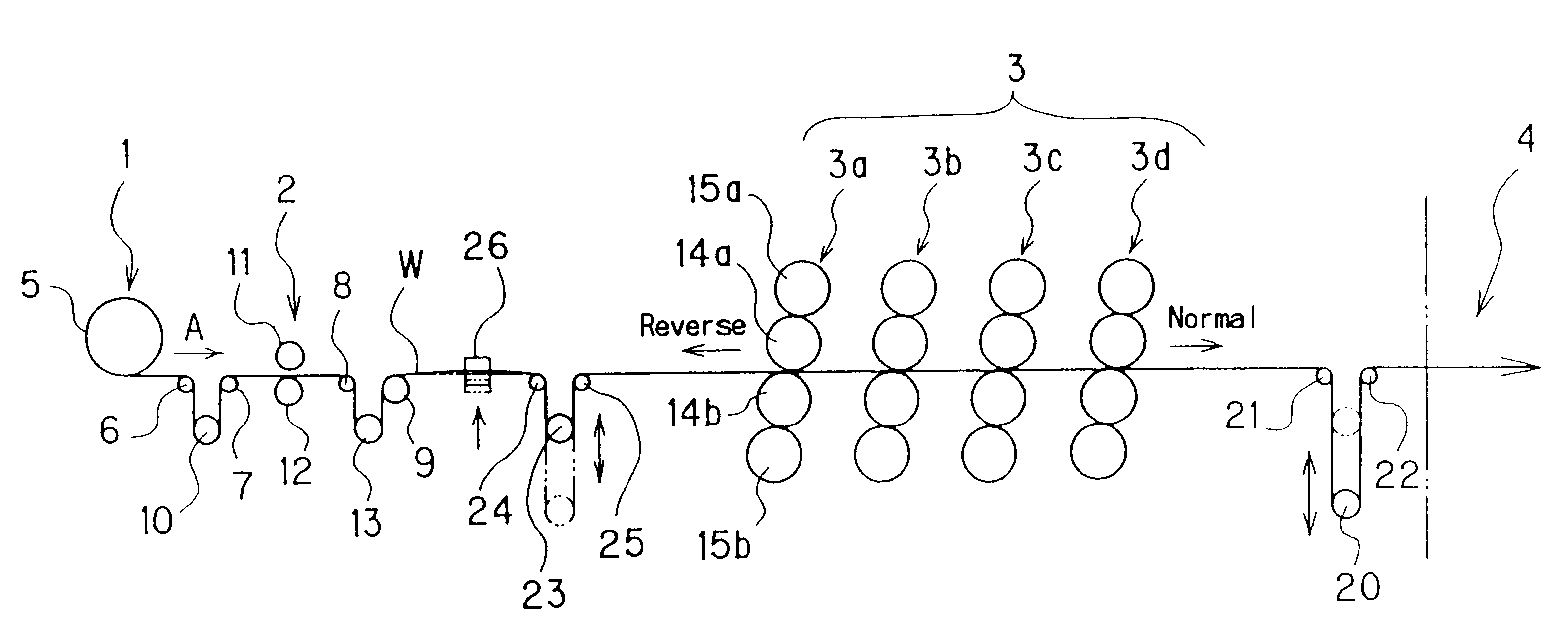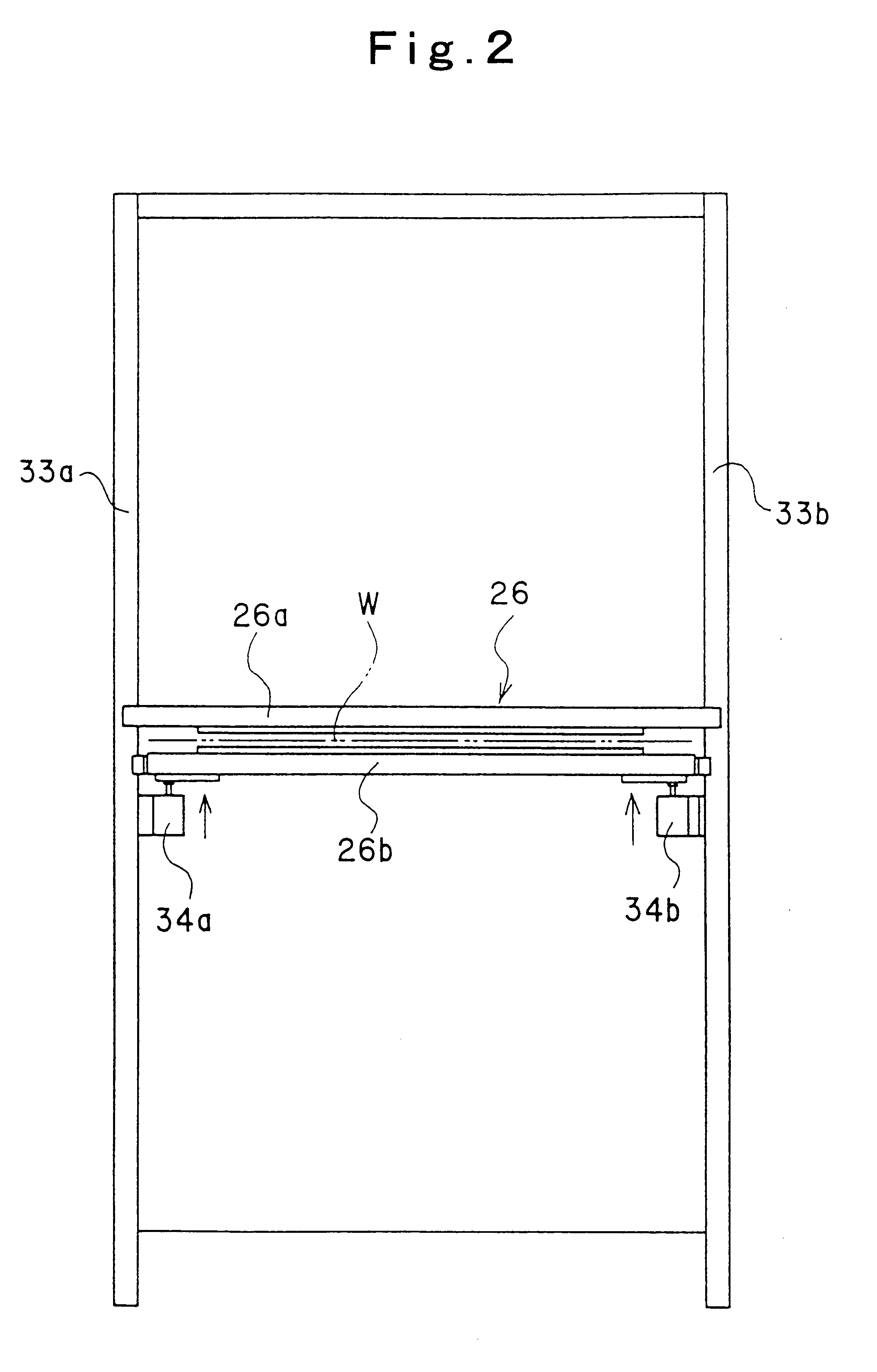Rotary press
a rotary press and rotary technology, applied in the field of rotary presses, can solve the problems of web tearing, small feed amount of web discharged toward the folder, and the web accumulated at the wrap preventing member on the folder side cannot be discharged
- Summary
- Abstract
- Description
- Claims
- Application Information
AI Technical Summary
Benefits of technology
Problems solved by technology
Method used
Image
Examples
Embodiment Construction
Preferred embodiments of the rotary press according to the present invention will now be described in detail with reference to the accompanying drawings, which in no way limit the invention.
As shown in FIG. 1, the rotary press has, in the order of printing, a feeder 1, an infeed unit 2, a printing unit 3 for printing a web W fed from the infeed unit 2, and a dryer 4 for drying the web W printed by the printing unit 3, and also has a cooler for cooling the dried web W, a web path portion, and a folder, although none of the cooler, web path portion, and folder are shown.
In the feeder 1, a roll 5 consisting of the web W wound in a roll form is present together with a spare roll (not shown).
In the infeed unit 2, guide rollers 6, 7, 8, 9 for guiding the web W pulled out of the roll 5 to the printing unit 3 are present. Numeral 10 denotes a tension roller, provided between a pair of guide rollers 6 and 7 arranged in an opposed manner. The tension roller 10 is supported by an air cylinder ...
PUM
 Login to View More
Login to View More Abstract
Description
Claims
Application Information
 Login to View More
Login to View More - R&D
- Intellectual Property
- Life Sciences
- Materials
- Tech Scout
- Unparalleled Data Quality
- Higher Quality Content
- 60% Fewer Hallucinations
Browse by: Latest US Patents, China's latest patents, Technical Efficacy Thesaurus, Application Domain, Technology Topic, Popular Technical Reports.
© 2025 PatSnap. All rights reserved.Legal|Privacy policy|Modern Slavery Act Transparency Statement|Sitemap|About US| Contact US: help@patsnap.com



